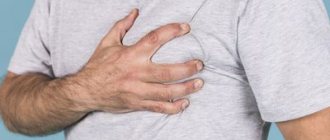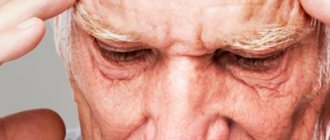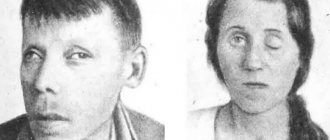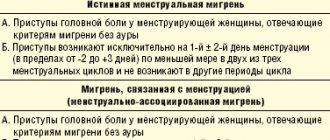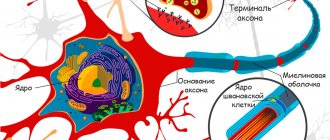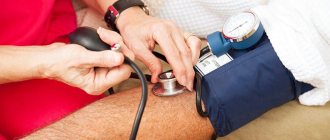Counterparts may not notice such a movement of the eyelid, but for the one to whom this happens, the sensations are not very pleasant. However, they are also harmless. You can’t ignore a tic at all: it notifies you of any problems in the body, problems of the nervous system, overwork, or mental disorders.
Why does the eye twitch
Movements of the eyelid muscles that occur against a person’s will for some time are called nervous tics (hyperkinesis). You can suppress it, but not always and not for long. There are many reasons for this phenomenon in adults:
- Prolonged stress, emotional shock, strong anxiety, worries, that is, all situations associated with muscle tension. Myocamia (involuntary, spontaneous contraction of the muscles of the lower and, less commonly, upper eyelid) is provoked by a false signal sent to the brain by excited neurons.
- Lack of sleep. But if previously it was believed that the norm for an adult is 8–9 hours, now experts say that this indicator is individual for each person. In any case, if the body does not have enough sleep for proper rest, then it makes itself felt, including tics.
- Avitaminosis is a lack of vitamins.
- Electrolyte imbalance due to a lack of calcium, magnesium, and other microelements in the body is the result of poor nutrition.
- Eye strain from prolonged use of a computer and other new-fangled gadgets, excessive viewing of television programs, reading in poor lighting.
- Side effect of certain medications. Therefore, it is recommended that before taking any drug, you carefully study the attached instructions.
- Excessive passion for drinks containing caffeine - tea, coffee, some types of soda.
- Eye injury, foreign body or irritating substances entering it.
- Bad habits that cause overstimulation of the nervous system - drinking alcohol, smoking.
- Dry mucous membranes, so-called “dry eye”. The cornea is not properly moistened with tear fluid, and the neurons send the brain a false impulse.
- Organic damage to the central nervous system, leading to increased neuro-reflex excitability and decreased muscle tone and reflexes.
- Exacerbation of eye diseases - blepharitis, conjunctivitis, etc.
- Weakened immunity after surgery, influenza, acute respiratory infections, acute respiratory viral infections and other infectious diseases.
- Sore throat – chronic tonsillitis. Frequent swallowing of saliva due to illness causes spasm of the eyelid muscle.
- Involuntary movement of the eyeballs - nystagmus.
- Facial hemispasm is a lesion of the facial nerve.
- Serious diseases, symptoms include eye tics - brain tumor, Bell's palsy, Tourette's syndrome, encephalitis, Parkinson's disease.
3.Types of eye twitches
There are three types of eyelid twitching:
- Twitching of the small eyelid;
- Benign essential blepharospasm;
- Hemifacial spasm.
Most common eyelid twitching
associated with
fatigue, stress, lack of sleep, drinking alcohol, caffeine and smoking.
The eye also twitches due to irritation of the surface of the eye or the membrane lining the eyelids (conjunctiva). Sometimes it is difficult to determine the cause of a tic, but almost always such twitching of the eyelid is harmless, painless and goes away quickly.
Benign essential blepharospasm
usually develops in middle-aged people and gradually progresses. In women, blepharospasm is diagnosed twice as often as in men. As a rule, benign essential blepharospasm begins with frequent blinking or irritation of the eyes caused by fatigue, stress or external irritants - bright light, wind, polluted air. As the disease progresses, sensitivity to light, blurred vision, and facial spasms may develop. In particularly severe cases, the spasms can become so severe that the eyelids remain closed for up to several hours. Gradually the eye stops twitching and the contractions go away. According to scientists, benign essential blepharospasm is a neurological disorder that develops due to a combination of environmental and genetic factors.
Hemifacial spasm
It is quite rare, and this disease does not just cause eye twitching. The tic usually affects the muscles around the mouth. Unlike other types of eyelid twitching, hemifacial spasm affects only one side of the face. The cause of tics in most cases is arterial pressure on the nerves of the facial muscles.
If your eye twitches, most likely nothing bad has happened. But you need to see a doctor if:
- The eye twitches for a week or longer;
- The eyelid twitches so violently that it closes completely;
- Spasms appeared not only in the eyes, but also in other facial muscles;
- There is redness, swelling, or discharge from the eyes.
About our clinic Chistye Prudy metro station Medintercom page!
Diagnostics
If an adult’s eye twitches from time to time and for a short time, then there is no reason to seek help. Everything will go away on its own, for example, if you rest well, get enough sleep, reduce time spent watching TV, laptop, don’t constantly stare at your smartphone, get enough sleep, eat normally, etc.
But if a nervous tic continues for a fairly long period (several minutes, hours of days) and this happens often, then a visit to the doctor is necessary. It is advisable to record a video at the time of the attack - this will help the specialist better understand the scale of the pathology.
It is important to understand that in the presence of serious symptoms, it will be possible to quickly get rid of nervous eye tics only if treatment is started no later than four months after their onset.
First you should contact an ophthalmologist. He will examine the patient, listen to him, make a diagnosis and prescribe therapy. If the cause of a nervous tic is not within the scope of his competence, he will redirect the patient to a psychologist, neurologist or endocrinologist.
To find out the “culprit” in muscle spasms, the following laboratory tests and instrumental examinations are carried out:
- fundus examination;
- blood test to determine microelements;
- Analysis of urine;
- Ultrasound of internal organs;
- MRI;
- brain encephalography;
- CT.
When do motor and vocal tics occur?
In recent years, according to Sarklinik, the frequency of occurrence of tics in the population has begun to constantly increase, and in childhood it ranges from 1.4 to 7.7% (in various age groups). Tics are more common in children and adolescents. Typically, the first signs and symptoms of tics appear between the ages of 3 and 9 years. In the absence of proper treatment, they remain at an older age, and then doctors classify them as tics in adults.
Treatment
Drug therapy involves taking certain drugs that reduce the intensity of tics, mild sedatives and sedatives or, in severe cases, strong ones:
- tranquilizers – eliminate anxiety, irritation, fear;
- anticonvulsants – remove cramps of facial muscles;
- antidepressants – relieve anxiety and anxiety;
- sedatives – relieve fatigue, tension, normalize sleep.
Pharmaceutical preparations include tinctures of valerian and motherwort, as well as vitamin complexes containing calcium and magnesium.
If spasms are symptoms of a disease, medications are also prescribed to treat it.
The most affordable treatment option is traditional medicine . You can put compresses on your eyelids with decoctions of geranium, wormwood, chamomile, drink infusions of herbs or hawthorn, teas with the same chamomile, lemon balm, and mint. But this should be done carefully, since allergic reactions to the listed plants are possible.
Such ancient Chinese treatment as acupuncture can also be used to treat hyperkinesis. The impact of needles on certain areas of the body, muscles, directs vital energy to bring the nervous system back to normal.
A relaxing head and neck massage helps reduce muscle activity . It improves their blood supply, relieves tension and reduces the excitability of the central nervous system.
Special exercises – palming – are also useful for relaxing the eye muscles:
- blink for a while and close your eyes tightly so that a tear appears;
- rotate the eyeball;
- look up and down, left and right;
- close your eyelids and relax.
Essential oils of cinnamon, geranium, lavender and others reduce the frequency of nervous tics and relax. You can take a bath with them or put a few drops on your pillow to sleep.
If treatment is not started in time, this will lead to the spread of tics to other parts of the face and body - cheeks, lips, limbs.
Psychosomatics of nervous tic of the eye
There is a psychosomatic theory of the development of hyperkinesis. Thus, it is believed that the movement of the eyelids is controlled by the subconscious: the eyes close when offended, unwilling to accept reality, or fear. Why? But because we instinctively close them, scared.
The famous psychologist Liz Burbo claims that a nervous tic develops in an adult whose internal tension has reached its climax. He's restrained himself for so long that he simply doesn't have the strength to continue doing this. Aggression, anxiety, fear, anger, sadness can be suppressed.
As a specialist in the field of personal development, Burbo gives advice to people suffering from tics: loosen self-control, fully express your emotions, make your desires come true, don’t try to seem better. Just love yourself, because you won’t be able to please everyone right away, accept yourself as you are.
Another equally eminent psychologist, Louise L. Hay, believes that the eye twitches in an adult with a tendency toward paranoia, who believes that he is constantly under the supervision of an all-seeing eye and is afraid of it.
Hay points out his own healing paths, which echo his colleague. You need to analyze body language and understand: both the cause and the solution to the problem are inside. If you transfer fear from the subconscious to consciousness and understand its cause, then the disease will begin to recede. Fear should be perceived as a protector, a helper, a teacher.
Both experts advise: for those who cannot identify the cause of fear, and with it the appearance of hyperkinesis, it is better to seek help from a psychologist or psychotherapist.
What are tiki? Tics in children, adolescents, adults
Tics are fast, clonic, irregular, stereotypical movements that are localized mainly in the face, neck, shoulder girdle, and less often spread to the torso, upper and lower extremities. By their nature, tics are not voluntary, but violent: a person is not able to overcome or stop them. For a short time, patients can voluntarily inhibit the tic. However, this causes significant internal tension in them, increases unpleasant bodily sensations, and then inevitably a violent movement arises, often more intense than usual.
How to quickly eliminate a tick
If your eye begins to twitch involuntarily due to extreme fatigue, reading in poor lighting, or working at the computer for a long time, we recommend using the following tips:
- Relax by closing your eyes for 10–15 minutes.
- Place cotton swabs moistened with warm water on your eyelids and leave for 5-10 minutes.
- Open your eyes wide, and then close your eyes tightly (to the point of tears). Repeat the exercise 2-3 times.
- Blink your eyes quickly for 10–15 seconds, then close them for 2 minutes and completely relax. Find the middle of the brow ridge above the twitching eye, and press on this place. Here is a branch of the trigeminal nerve that connects the skin of the upper eyelid with the central nervous system, and with such actions it can be stimulated.
You can moisturize a dry cornea with special products, available in abundance in pharmacies.
Auditory, vocal, motor, motor tics and Gilles de la Tourette syndrome
More often, with Tourette's syndrome, which has a second name - Tourette's disease, the clinic begins with motor tics (blinking the eye, wrinkling the forehead, flinching, sniffing the nose, tic the cheek, clenching the lips, neck, shoulder, throwing the head, bending the fingers, later the whole body, turning around, copropraxia, “Michael Jackson gait”, walking backwards, jumping, swaying, bowing), therefore making a correct diagnosis at the initial stage can be difficult. After a few months or even years, sound tics appear. In the medical practice of Sarklinik, clinical cases were also observed in which children had vocal tics, but motor ones were almost invisible or mildly expressed. Vocal tics in Tourette syndrome are varied. There may be whistling and whistling, snorting, coughing and coughing, sniffling, grunting and grunting, sore throat and choking, choking sounds, squealing and squealing, squealing and squealing, sniffling, croaking and croaking, dog barking, yelping, any individual sounds. As Tourette's disease progresses, shouting of words, phrases, echolalia, coprolalia, scotolalia occurs, socially unadapted movements and actions appear, and strong blows are struck to oneself and others. Motor and sound tic-like movements increase, auto-aggression and palilalia (repetition of the last word spoken by the patient himself) appear. The situation is becoming catastrophic. What to do? Where to contact? Where and how to treat?
Sound sleep is the key to health
It is extremely important to stabilize sleep to eliminate involuntary muscle contractions. As you know, it is this that is the best medicine! To make it full-fledged and, as they say, healthy, it is recommended:
- Set a sleep schedule - go to sleep and wake up at the same time every day. Thanks to this, biorhythms are normalized, allowing the body to recover during such rest. The optimal time to go to bed is 22 hours.
- Maintain your sleep norm. Moreover, it must be deep and continuous. Violation of its structure does not allow the nervous system to fully recover, and upon awakening a person will not feel rested and alert.
- Create the most favorable conditions - turn off all light sources (including TV and computer), take measures to prevent sound from entering the bedroom.
- Do not drink coffee or tea before going to bed. They activate areas of the brain and stimulate the psyche. Because of this, it is difficult to fall asleep, and sleep will be interrupted. It is better to use a healthy decoction or infusion of chamomile or mint.
- Do not eat protein foods (meat, cottage cheese, eggs). Eating at night is generally harmful to the gastrointestinal tract. In addition, it is quite difficult to fall asleep with a full stomach.
- 1-2 hours before going to bed, take a walk in the fresh air, and if this is not possible, simply ventilate the room. It is better not to engage in serious mental activity at this time, as well as sit at a PC or watch TV.
- Take a hot shower or bath to relax your muscles.
Types of ticks
All tics are divided into motor (motor) and vocal (sound), simple and complex. With simple motor tics, as a rule, one muscle group is involved in the tic-like act, and with complex motor tics, several muscle groups are involved. Depending on the stage of the disease, the state of the nervous system, the time of year, mental stress, and the severity of the disease, the same patient may experience different types of tics, varying in strength and frequency. Various muscle groups are involved. If one muscle group is involved in tics, then such tics will be isolated. If several muscle groups are involved in a motor act, then such tics will be generalized. Transient tics last from 4 to 12 months. Chronic tics usually last more than one year.

